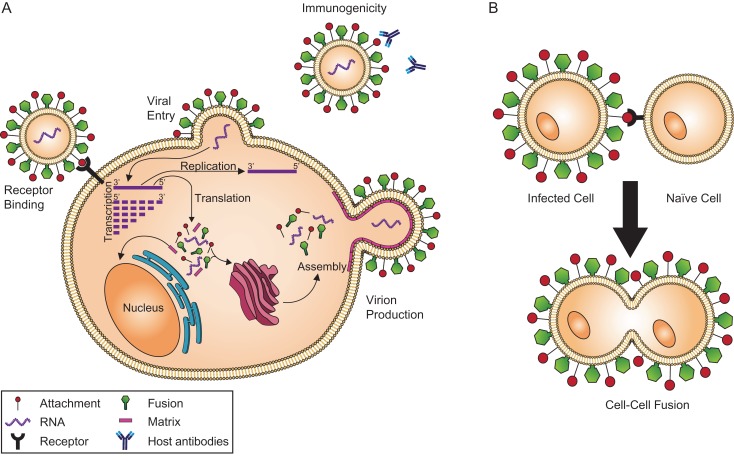Fig. 3.
Diagram of the viral life cycle. (A) Virions bind to host cell receptors (black), facilitating viral entry into the cell. Once within the cell, transcription and replication occur. This allows the production of viral proteins, which are processed and trafficked through the cell using host cell machinery (endoplasmic reticulum and Golgi apparatus). Viral proteins and RNA are packaged into new virions, which are then released from the cell. These virions can then interact with the host immune system. (B) Infected cells can express viral proteins on their cell membranes, which can react with cell receptors on neighboring naïve cells, causing cell–cell fusion.

